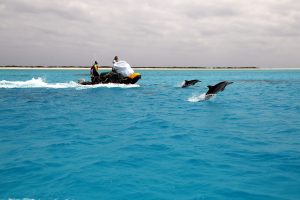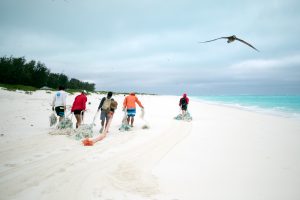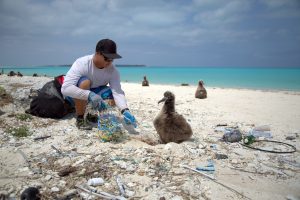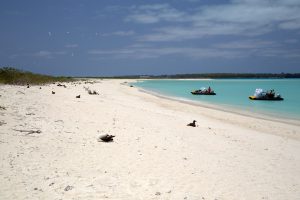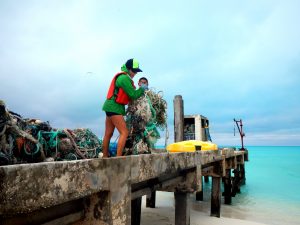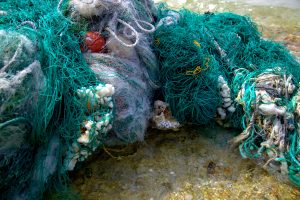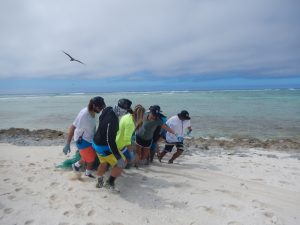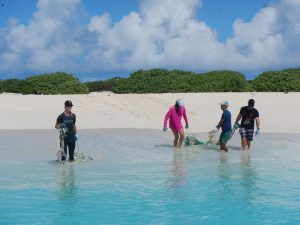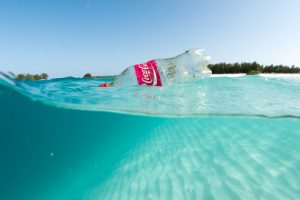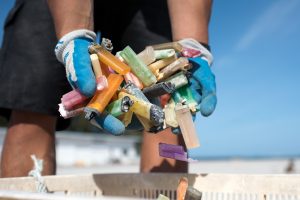Twelve Tons of Debris Removed from Papahānaumokuākea
The National Ocean Atmospheric Administration marine debris expedition to Papahānaumokuākea Marine National Monument in the Northwestern Hawaiian Islands gathered a total of 12 tons of marine debris.
Ten NOAA scientists from the Pacific Islands Fisheries Science Center Coral Reef Ecosystem spend nearly a month’s worth of time between April 12 and May 13 at five different islands and atolls, as well as onboard the NOAA ship Hi’ialakai in PMNM, conducting shoreline marine debris surveys and removing trash.
This year’s mission had two layers, starting with a 15-day land-based operation at Midway Atoll National Wildlife Refuge and concluding with a 17-day ship-based operation.
The majority of the debris collected was fishing gear and plastics taken from the shorelines of Midway Atoll, Kure Atoll, Pearl and Hermes Atoll, Lisianski Island, and French Frigate Shoals.
Included in the 12 tons of marine debris was 1,843 derelict fishing nets or net fragments (weighing 18,755 lbs.), 1,468 plastic beverage bottles, 4,457 bottle caps, 570 shoes and flip-flop sandals, 535 cigarette lighters, 485 toothbrushes and other personal care products, and 8,452 hard plastic fragments.
NOAA officials say marine debris is a human-induced global problem that impacts coral reef ecosystems and marine wildlife.
On Friday, NOAA hosted an educational marine debris sorting event for school children from grades three through six to sort plastic bottles, bottle caps, toothbrushes, and other non-hazardous debris that was collected during this year’s marine debris removal expedition
Following the event, the plastics will be recycled for use in art displays and manufactured goods. All derelict fishing nets will be sent to Hawai’i’s Nets to Energy Program, a partnership with Covanta Energy and Schnitzer Steel, to be used as fuel to generate electricity, powering homes on O‘ahu.





